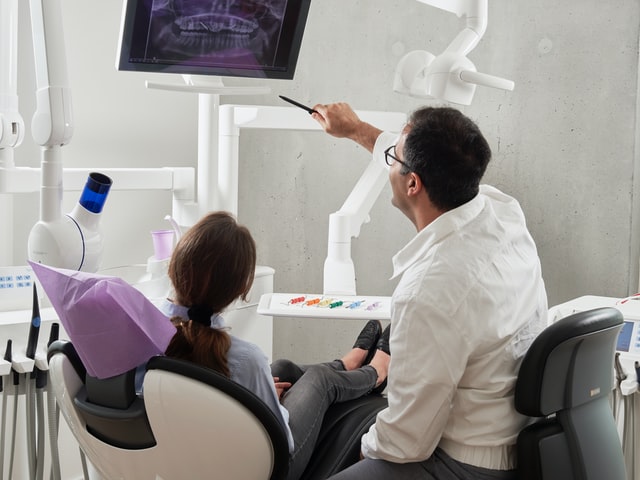
Usually, if not lazy to brush their teeth, children are afraid to visit the dentist to avoid injection, especially if it will be on their gums. Many commotion and explanations happen before we persuade them to see their dentist, even for a regular check-up and not for tooth extraction. Supporting children in cultivating good habits to care for their teeth when they are young is significant. As children, we as parents need to lead and guide them to proper oral hygiene. We need to explain why they need to visit a dentist and not to be afraid. We need to tell the importance of cleaning our teeth.
Visiting a Dentist
Different dental associations suggested that children visit a dentist during their first birthday. This visit provides your dentist an opportunity to examine early issues with your child’s teeth. Pediatric dentists specialize in the care of children’s oral hygiene. The dentist is going to talk to you about the right oral treatment. Visiting your dentist at an early age will help make your kid feel relaxed. It also sets out the healthy habit of daily dental checks. All want to visit the dentist twice a year. A dentist should check your child’s teeth to ensure that they mature correctly. This could mean watching for problems such as crooked teeth, gingivitis, bite alignment, and loss of teeth. In some instances, early detection is critical to obtain the child’s oral health and development.
Having Teeth Braces or Retainers or Aligners
Kids may need braces for various reasons, like bent, overlapping, overcrowded teeth, or “bad bite” (known as malocclusion). Malocclusion is where there is a disparity between the size of the upper and lower jaws. When the upper jaw is larger than the lower jaw, it is considered an overbite. It regards as an underbite; if the lower jaw is more prominent
In comparison to the conventional braces, orthodontic transparent aligners seem miraculous in several respects, perhaps too remarkable to be real. Regarding Byte compared to AlignerCo, both clear aligners are an excellent way to fix mild or slightly crowded or poorly spaced teeth. They are more effective if the back teeth match together correctly. Clear aligners are typically useful in improving the simpler or tilting motions of two-dimensional teeth. Clear orthodontic aligners substitute for conventional braces used to move your teeth and enhance your face without any intervention with your everyday life. They are removable trays made of a translucent plastic film, which is entirely invisible.
They use retainers to secure the teeth in alignment. It takes time for the teeth to relax in their new place until the braces detach. You will keep the teeth from moving by using a retainer. Any of the retainers can be reversible. Others are fixed—bonded behind the teeth. Any of the brackets are made of translucent plastic and metal wires and others from plastic. And, like braces, if you choose, the holders will make a point. Glow-in-the-dark holders or holders are personalized with a photo.

Brushing Teeth
Oral health must start when your child is still an infant. Begin to use a soft child-sized toothbrush at the age of 1 or 2. You should clean your baby’s teeth with water at least twice a day. You should also add a little bit of toothpaste that has no fluoride in it. This form of toothpaste is healthy for your baby to chew. It would be best if you turned to one with fluoride until your child is old enough to spit out the toothpaste. Educate your children to extend it to your teeth, gums, and tongue. Have the children help them pick their toothbrushes. To entice more, Help your kid to select their choice of healthy toothpaste. They can choose or choose different flavors that suit their taste.
Childhood is a vital time for orthodontic wellbeing. This age is the best time to change the position and orientation of teeth, and early adjustments will make a difference over a lifespan. Having orthodontic tests component of the child’s routine check-up program is rational thinking – it helps any problems be detected early and only handled when there is the most room to adjust in the jaw. So we need to act as early stages of our children regarding mouth hygiene to prevent untoward gum diseases.










